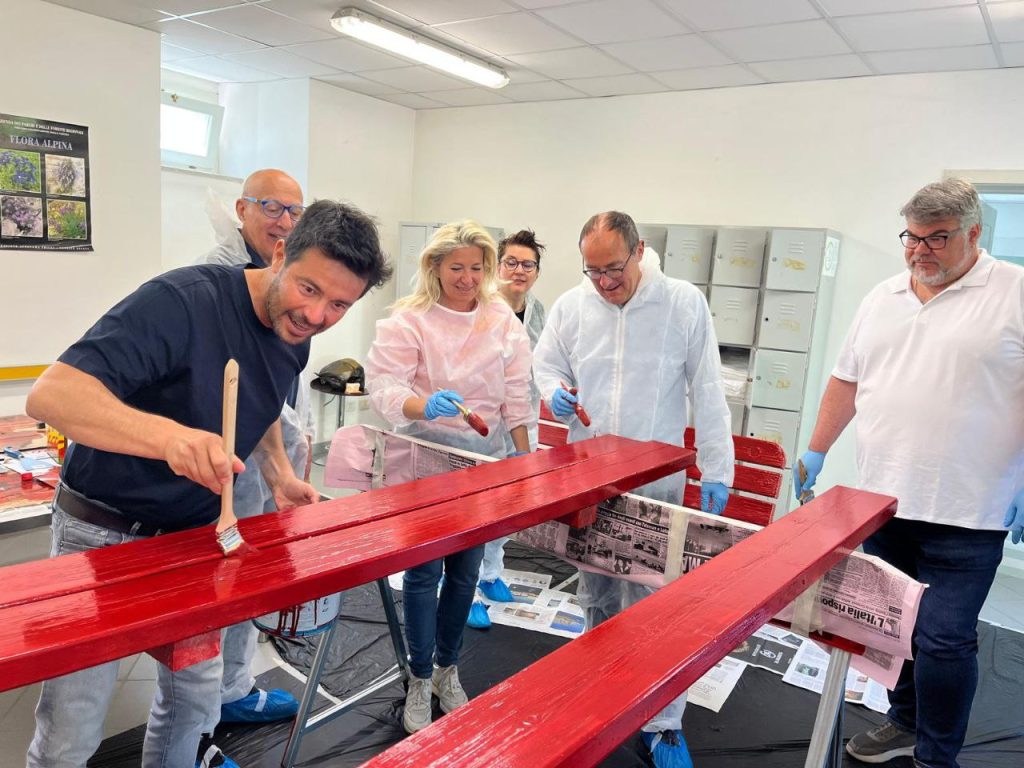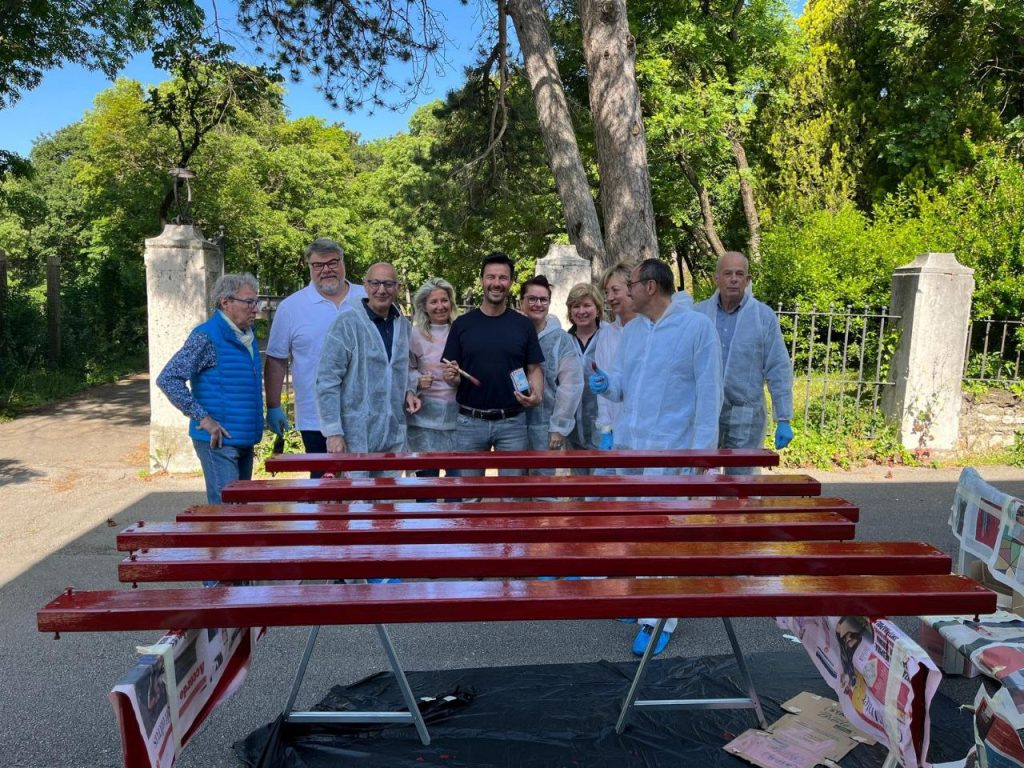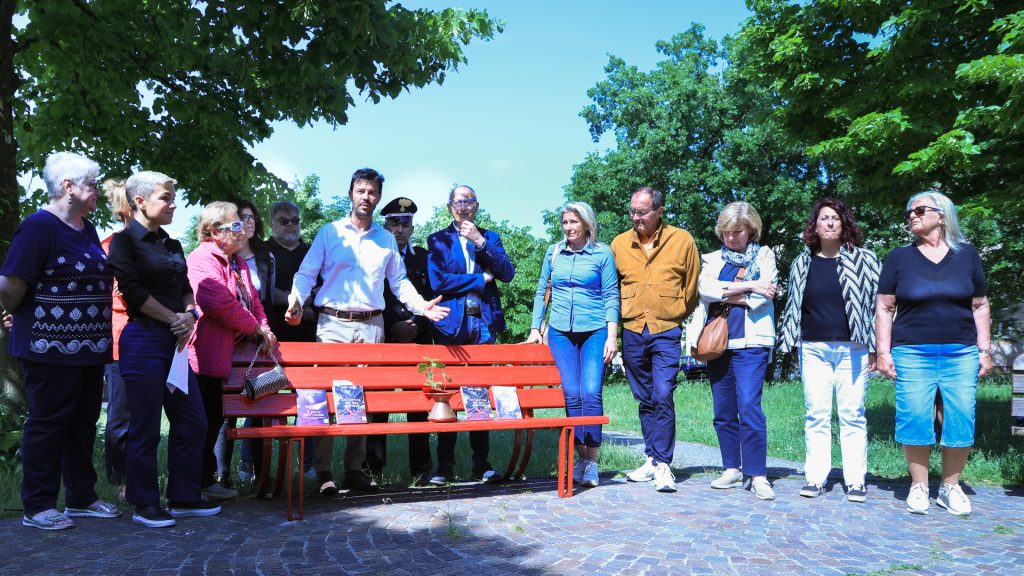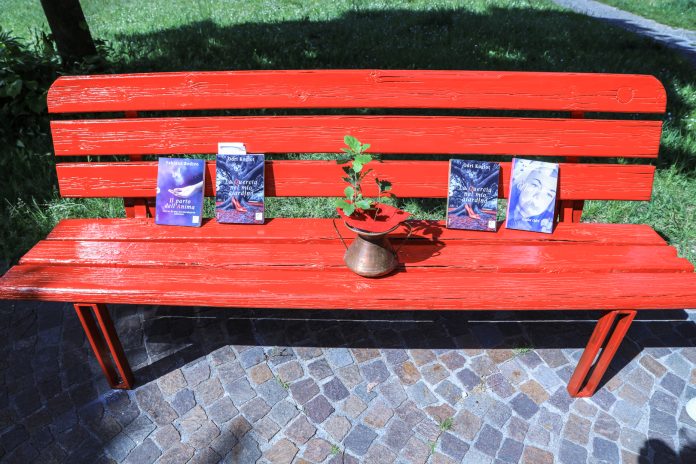by InTrieste
In the quiet garden of Via Sant’Isidoro in Opicina, city officials and residents gathered Monday afternoon for the launch of a symbolic initiative against gender-based violence.
Michele Babuder, Trieste’s Councillor for Urban Policy, held a press conference to present the Panchine Rosse (Red Benches) project, aimed at raising awareness of violence against women. The initiative calls for the placement of red-painted benches in public gardens across the city — a gesture intended to provide visible, lasting reminders of a pervasive issue.

“This moment was conceived to give tangible visibility to the message of combating violence against women, and to those who promote it,” Babuder said, opening the event.
The gathering also featured a literary component: local author Odri Koglot presented her book La quercia nel mio giardino (“The Oak Tree in My Garden”), which weaves together biographical and autobiographical reflections on the subject of domestic abuse and personal resilience.

Several civic leaders attended the event, including representatives from the city’s Second (Altipiano Est), Fifth (Barriera Vecchia and San Giacomo), and Sixth (San Giovanni and Chiadino-Rozzol) District Councils — Nives Cossutta, Michela Novel, and Roberto Cavallaro, respectively. Also present were architect Anna Nisi, head of the Green Spaces Projects Unit of the Trieste Municipality, the commander of the Carabinieri station in Villa Opicina, authors Fabiana Redivo and Odri Koglot, and numerous local residents.
In December 2024, the three district councils submitted motions requesting that at least one red bench be placed in every public garden within their areas. While the city’s Environment and Urban Sanitation Department began assessing the scope and cost of the initiative, the necessary funds were not included in the current municipal budget.

To avoid delays, the city opted for a cost-effective solution: refurbishing existing benches and repainting them red — one for each district, selected for its symbolic and strategic significance.
The benches will serve not only as memorials, but also as quiet calls to action — reminders of the ongoing struggle against gender-based violence and of the importance of community solidarity in addressing it.





























